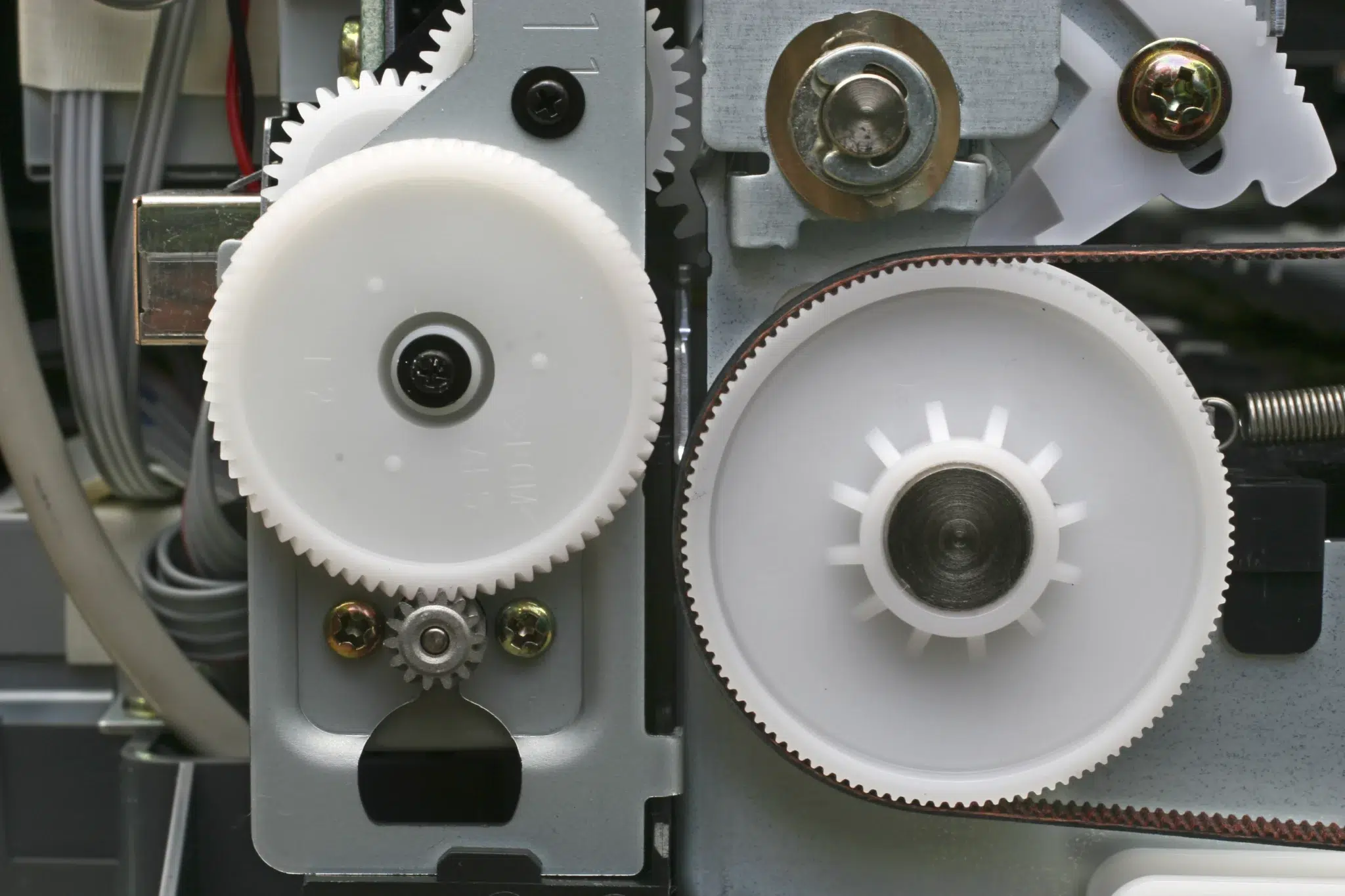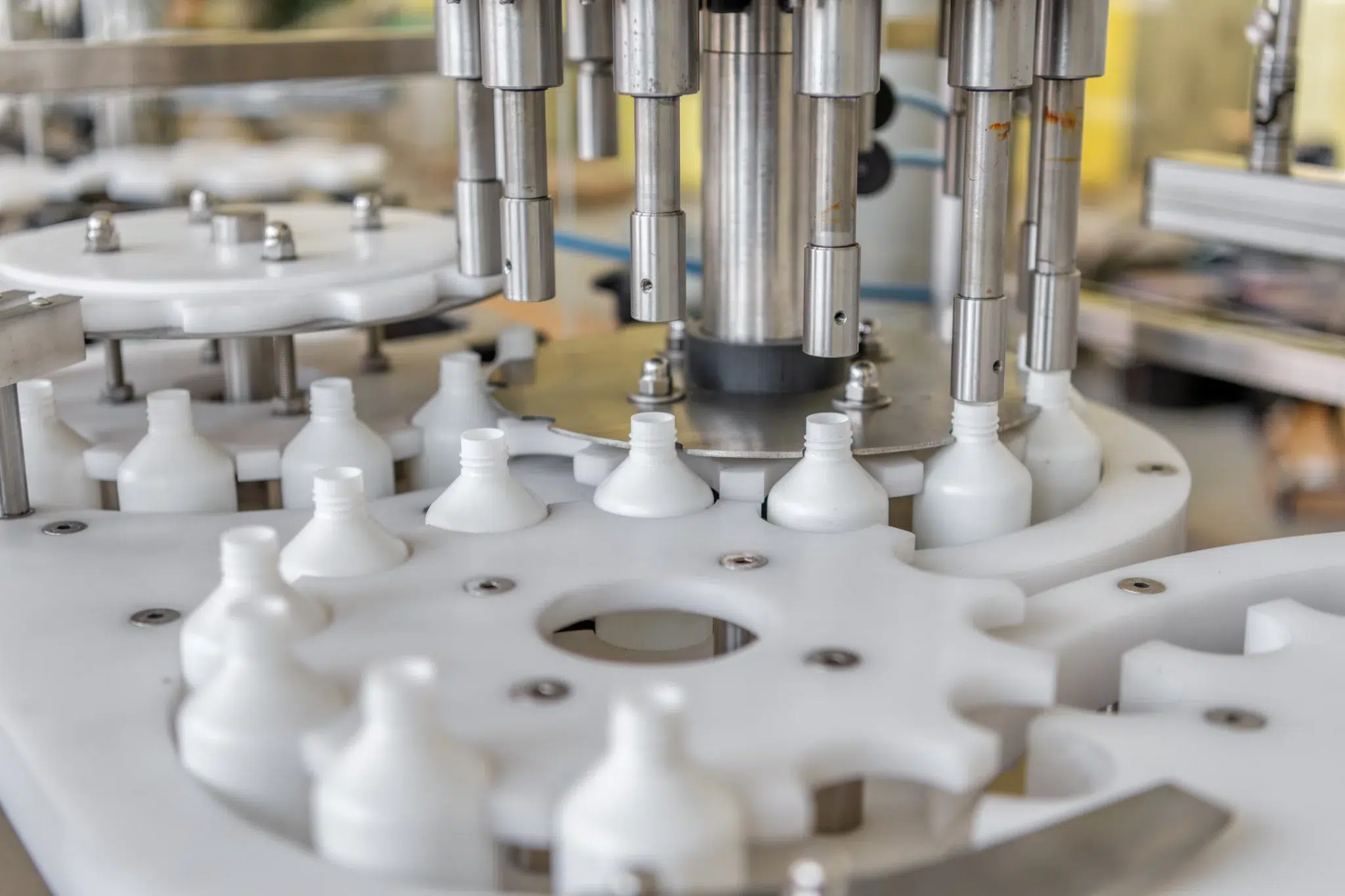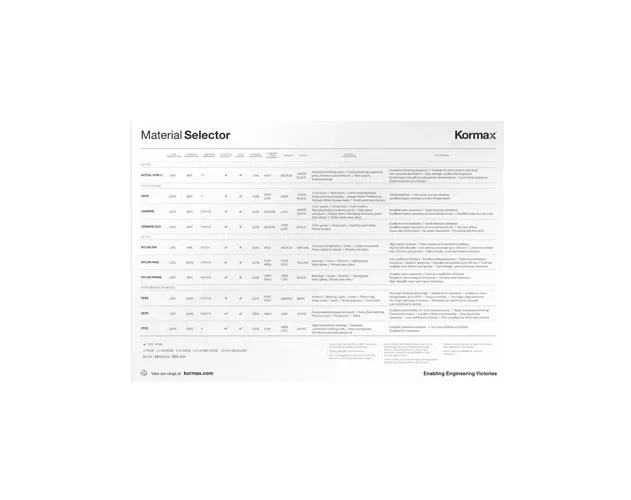Understanding the 3 Most Common Engineering Plastics & Their Properties
With 75 years of foundry experience, Kormax has worked hard to become an industry leader in the manufacture and supply of high-quality engineering materials to commercial industries in New Zealand and beyond. With over 70 years of engineering experience under our belts, we’re always ready to share our expertise on the best material for your project. In this blog, we’ll be looking at engineering plastics. We’ll introduce you to the three most popular types in use today and discuss the relative merits and some of the most common applications for each.
What is an Engineering Plastic?
Engineering plastics are plastic materials that are stronger and more durable than commodity plastics like PVC, polypropylene, and polyethylene. This makes them suitable for use in machine and automotive parts, construction equipment, electronics, and even sporting goods. The term “engineering plastics” was applied to these materials when they first started being used to replace metal machine parts in the mid-twentieth century.
All plastics fall into one of two categories: thermoplastics and thermosetting plastics. The difference between a thermoplastic and thermosetting plastic or ‘thermoset’ is that thermoplastics can melt when exposed to heat, while thermosets retain their form once cured. Engineering plastics can be either thermoplastics or thermosets..
The Benefits of Engineering Plastics
Engineering plastics have come to replace metal components for a wide variety of industrial applications. In an increasing number of applications, modern plastics have replaced traditional materials like metal and glass, matching them in terms of strength, durability, and resistance to various kinds of wear and abrasion. They are also much lighter than most traditional materials, as well as being more affordable and easier to produce, especially for complex shapes.
What Are the 3 Most Common Engineering Plastics?
Here we will look at the three most common engineering plastics: Nylon, Acetal, and UHMWPE.
Nylon
Nylon is popular for its high wear resistance and load bearing properties and is probably the most widely used of all engineering plastics. Nylon components are up to 80% lighter than those made from metal.
Kormax Range: Kormax offers three grades of nylon material: Nylon PA6, PA6G, and PA6MG. All of these materials vary in terms of tensile strength, water absorption, and impact resistance, among other factors. These different qualities make them suitable for a variety of different applications.
Nylon PA6 (Nylon 6)
Properties: Kormax Nylon (PA6) offers high tensile strength and excellent resistance to impact and wear, and also has good resistance to harsh chemicals. It has a hardness ranking of M85 (out of M100). As nylon has a relatively high rate of absorption – it absorbs up to 6% of its weight in water – it is typically not used in food processing applications.
Common Applications: Kormax Nylon is frequently used for gears, conveyor rollers, and mechanical parts that are subject to impact.
Nylon PA6G (Nylon G)
Properties: The addition of oil to Kormax Nylon PA6G (or Nylon G) gives this material enhanced wear capability and reduced friction. It has a hardness rating of M82, offers good chemical, thermal, and UV resistance, and can absorb 5.3% water.
Common Applications: Nylon G is commonly used for sliding pads, wear plates, gears, and bearings.
Nylon PA6MG (Nylon Max)
Properties: This modified Nylon – Nylon PA6MG or Nylon Max – uses a solid lubricant (molybdenum disulphide or Mos2) added during fabrication to offer excellent wear resistance and a low coefficient of friction. Nylon Max is heat resistant up to 90°C and has a hardness rating of M85, making it durable under demanding conditions.
Common Applications: Some of the common applications of Nylon Max include bushings, sheaves, wear parts, and wheels.

Nylon cog and gear wheels in a modern computer printer.
Acetal
Acetal is a strong, rigid engineering plastic with excellent mechanical stability and low moisture absorption. Its rigidity gives it excellent machining properties and it is highly resistant to creep, moisture, and fatigue, making it suitable for food processing applications.
Kormax Range: Kormax offers regular Acetal (POM) as well as Acetal Max, which uses 9% polyethylene to reduce friction and improve wear resistance.
Acetal (POM)
Properties: Acetal (POM) is an engineering plastic whose low moisture absorption means it remains stable in humid conditions and high temperatures, making it the material of choice for outdoor settings, food processing applications, and pharmaceutical industries. It also offers high strength and rigidity, giving it excellent machining qualities, and is often used in electrical insulating parts and sliding components. Kormax Acetal (POM) is suitable for operation in temperatures up to 80°C.
Common Applications: Acetal is commonly used in electrical insulating parts, food processing equipment, the pharmaceutical industry, and for sliding parts.
Acetal Max
Properties: Acetal Max includes 9% polyethylene, which acts as a lubricant, improving wear and impact resistance and reducing friction. Like Acetal POM, Acetal Max is a popular choice for food processing applications and can operate in temperatures of up to 90°C.
Common Applications: Acetal Max is often used for bushes, close tolerance parts, gears, and food processing equipment.

Automatic line for filling and labelling pharmaceuticals. The mechanism for filling plastic bottles.
UHMWPE
UHMWPE (Ultra-high-molecular-weight polyethylene) offers the highest impact strength of any engineering or thermoplastic, a quality it retains in minus zero temperatures. This has made it popular for use on ice skating rinks and even as one of the main materials used in the construction of bulletproof vests [1].
Kormax Range: In addition to regular UHMWPE, Kormax offers UHMWPE Eco (sheet) and UHMWPE Max (sheet).
UHMWPE
Properties: Kormax UHMWPE offers excellent wear resistance and good chemical resistance at low cost. Unparalleled impact resistance makes it popular for use in dock fenders, chain guides, under-chain wear strips, hopper liners, and packaging machinery parts. Its high stability means it can be used in food processing applications.
Common Applications: Commonly used in bushes, gears, close tolerance parts, and food processing equipment.
UHMWPE Eco
Similar to regular UHMWPE, Eco grade UHMWPE uses a portion of regrind from the production of premium grade material to reduce waste. The main difference in terms of properties and applications is that, unlike regular UHMWPE, the Eco grade is not suitable for use in food processing applications.
Common Applications: Commonly used for chain guides, wear pads, wharf fenders, irrigation gate slides.
UHMWPE Max
The addition of a lubricant to UHMWPE Max gives it improved wear and abrasion resistance while retaining the excellent impact resistance and high stability in minus 0 temperatures that regular UHMWPE is renowned for.
Common Applications: This material is often used in wear parts, hopper liners, chute liners, and machine guides.

UHMWPE Wharf fenders
Comparison Summary
The following table presents a side-by-side comparison of the plastics discussed in this article. It includes ratings for mechanical, thermal, and general properties as well as common applications for each material.
| Acetal (POM) | Acetal Max | UHMWPE | UHMWPE Eco | UHMWPE Max | Nylon | Nylon G | Nylon Max | |
|---|---|---|---|---|---|---|---|---|
| Rockwell Hardness | M88 | M84 | – | – | – | M85 | M82 | M85 |
| Tensile Strength at Break Point | 63 | 44 | 20 | 22 | 23 | 54 | 55 | 55 |
| Coefficient of Friction | 0.35 | 0.15-0.25 | 0.2 | 0.15-0.25 | 0.15 | 0.42 | 0.3 | 0. |
| Friction Rating | Medium | Very Low | Low | Very Low | Low | Medium | Very Low | Very Low |
| Impact Strength Charpy 7.5J | No Break | No Break | – | – | – | No Break | No Break | No Break |
| Abrasion Resistance | Average | Very Good | Excellent | Excellent | Excellent | Very Good | Excellent | Excellent |
| Suitable for Food Contact | Yes | Yes | Yes | No | No | No | No | No |
| Max Temperature | 90°C | 90°C | 80°C | 80°C | 80°C | 90°C | 90°C | 90°C |
| Low Temperature | -45°C | -45°C | –200°C | –200°C | –200°C | –30°C | –30°C | –30°C |
| Suitable Applications | Sheaves | bearings | guide rails | machine parts | gears & sprockets | sliding components | Bearings | rudder bearings | machine parts | gears & sprockets | cams & ratchets | Chain wear strips | chute & bin liners | star wheels | bearings & rollers | guide rails | Chain wear strips | chute & bin liners | scraper blades | screw conveyor linings | guide rails | Under chain wear strips | chute & bin liners | scraper blades | screw conveyor linings | guide rails | Sheaves | bearings | cutting boards | scraper blades | gears & sprockets | Bearings | gears & sprockets | chain tensioners | low friction bearing pads | gear racks | Sheaves | bearings | gears & sprockets | low friction bearing pads | gear racks |
Contact Kormax Today
Kormax is a proudly NZ owned and run company, with our head office located in Palmerston and two other offices in Australia and the US. If you’re looking for engineering plastics or metals, we have a huge variety of high-quality materials to suit every application.
Our experts are ready to discuss your needs and offer solutions to your engineering challenges. Visit the contact section of our website and get in touch by phone or online today.
References
- Ballistic materials used to make a bullet proof vest https://protectiongroupdenmark.com/articles/2-ballistic-materials-used-to-make-a-bullet-proof-vest/

